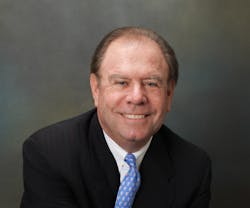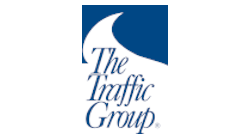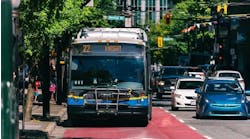According to the BRT Centre of Excellence, bus rapid transit (BRT) is a major source of transportation for millions every day. There are 69 cities across Latin America that have a BRT system, transporting nearly 21 million people on a daily basis. Asia has 9.2 million daily BRT users in 42 cities while Europe has 2 million passengers in 59 cities. By comparison, the U.S. has only 471,000 passengers using BRT systems in 21 cities across the country.
That said, more cities are considering BRT as a cost-effective mode of transportation. In 2015, the Maryland Lt. Governor publicly recommended BRT as an alternative to rail. And across the country, more than 20 new BRT systems are in the works. Why? Simply put, cost. Light rail is notoriously expensive — to the tune of approximately $150 to $250 million per mile. Comparatively, BRT — a mass transit solution initially developed in Latin America — is typically $10 to $30 million per mile.
The Traffic Group considers BRT to fit into the 80-20 Rule. This means BRT can often cost 20 percent of a light rail system but can capture 80-85 percent of light rail riders. In other words, this has the potential to save taxpayers millions of dollars while simultaneously reducing traffic congestion and providing great transit.
The Rules of BRT
The good news doesn’t just stop at the cost savings. A BRT solution has all the amenities of modern rail, such as Wi-Fi, level boarding, and off-vehicle payment systems. BRT is flexible and serves dual purposes: it can ride on dedicated lanes, but has the ability to leave those lanes and take another route if necessary. Rail, by contrast, cannot switch routes once constructed.
BRT systems can be built in the median area of roadways, the same layout as many light rail systems.
A great Class A BRT system can be built in an area that comprises 27 feet in width without a station and another 13 feet with a station. Larger buses in dedicated lanes move faster along the route due to traffic signal priority systems, allowing for more people moving quicker from origin to destination. These dedicated lanes are considered critical to make a BRT system successful.
The most important lesson learned is that the “R,” or rapid, in BRT is critical — keep it rapid. Therefore, some important rules:
1. Transit stops in 1-2 mile intervals
2. High density (20-50 DU’s acre minimum) at transit stops
3. Do your best to have the dedicated lanes in the median area of a road
4. Traffic signal priority (TSP)
5. Level boarding, with at least 2 entry doors/vehicle
6. Off-vehicle payment systems
The ROI of BRT
A 2016 study by Arthur C. Nelson of the University of Arizona and released by Transportation for America found that BRT lines can actually shape real estate and attract jobs. A surprising finding to come out of a portion of the study — lead by University of Utah’s Joanna Ganning — was that the manufacturing industry seems to be drawn to BRT corridors. Specifically, microbreweries are setting up shop along Cleveland’s BRT line.
Nationally, BRT has resulted in upwards of 400 percent of return on investment along transit corridors. There are close to 20 BRT systems being planned throughout the United States. Some of the most noteworthy systems can be found in Las Vegas and Eugene, Oregon, to name a few, while the most state-of-the-art can be found in Cleveland, Ohio.
The Cleveland system’s transit stops are iconic along its route — named the HealthLine — with paid naming rights by the Cleveland Clinic. The stations could be mistaken for metro or light rail stops with all the amenities. To top it off, economic growth and density along the HealthLine Corridor has generated billions in development, jobs and taxes. Specifically, Cleveland’s BRT delivered more than $4.8 billion in economic development in and around the route: a staggering $114.54 gained for every dollar spent on creating and launching the HealthLine. Even more surprising is that the original investment in the BRT program was a modest $50 million. Given these numbers, it should come as no surprise that offices within a quarter-mile of BRT cost 18 percent higher than office space outside walking distance of the line. This leads to a thriving ridership. Annual ridership has increased about 60 percent over the previous bus line, which the HealthLine replaced in 2008.
One of the best BRT systems in North America can be found in the York region of Toronto, Canada. In all of their materials describing and marketing their BRT system, they focus on the lifestyle the service provides, not on the BRT itself. By doing so, the city is offsetting the “bus stigma” associated with BRT systems. Offering amenities typically found with new, state-of-the- art rail systems and convenience for riders — the rapid transit vehicles come every five minutes during peak times — consumers realize the benefits of a BRT system. In conducting our own on-the-ground research, The Traffic Group has visited most of the 21st century systems in North America and believe Toronto’s VivaNext System can be considered the best so far. But, perhaps the most famous BRT system worldwide is located in Bogota, Columbia, which carries 30,000 to 42,000 passengers per hour — not daily, not weekly, but per hour.
In Conclusion
It is imperative that all jurisdictions consider BRT as an alternative to other transit systems and clearly as an alternative to light rail. Remember that BRT is not a substitute for local bus service — it is an add-on to local bus service.
So many things can be achieved with a great BRT system when properly designed. BRT allows for more transit riders and a more green, sustainable community. Not only can it help riders save precious time and money, but it can also connect more people to jobs and educational opportunities.
The bottom line: BRT Systems present us with a transportation option that is economically feasible and proven to reduce traffic congestion, while still providing a solid transit solution.
Wes Guckert, PTP, is president & CEO of The Traffic Group, a 30-year-old traffic engineering and transportation planning firm headquartered in White Marsh, Maryland.


